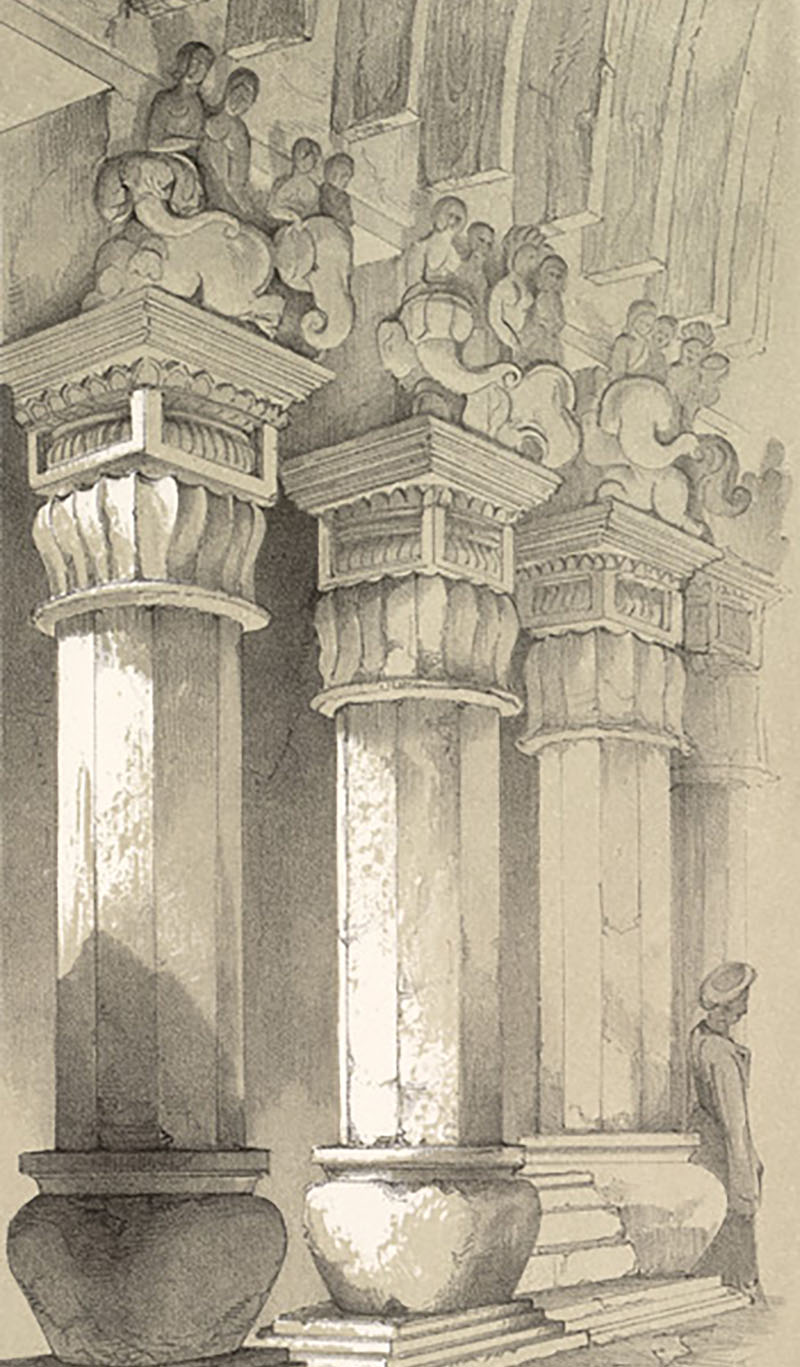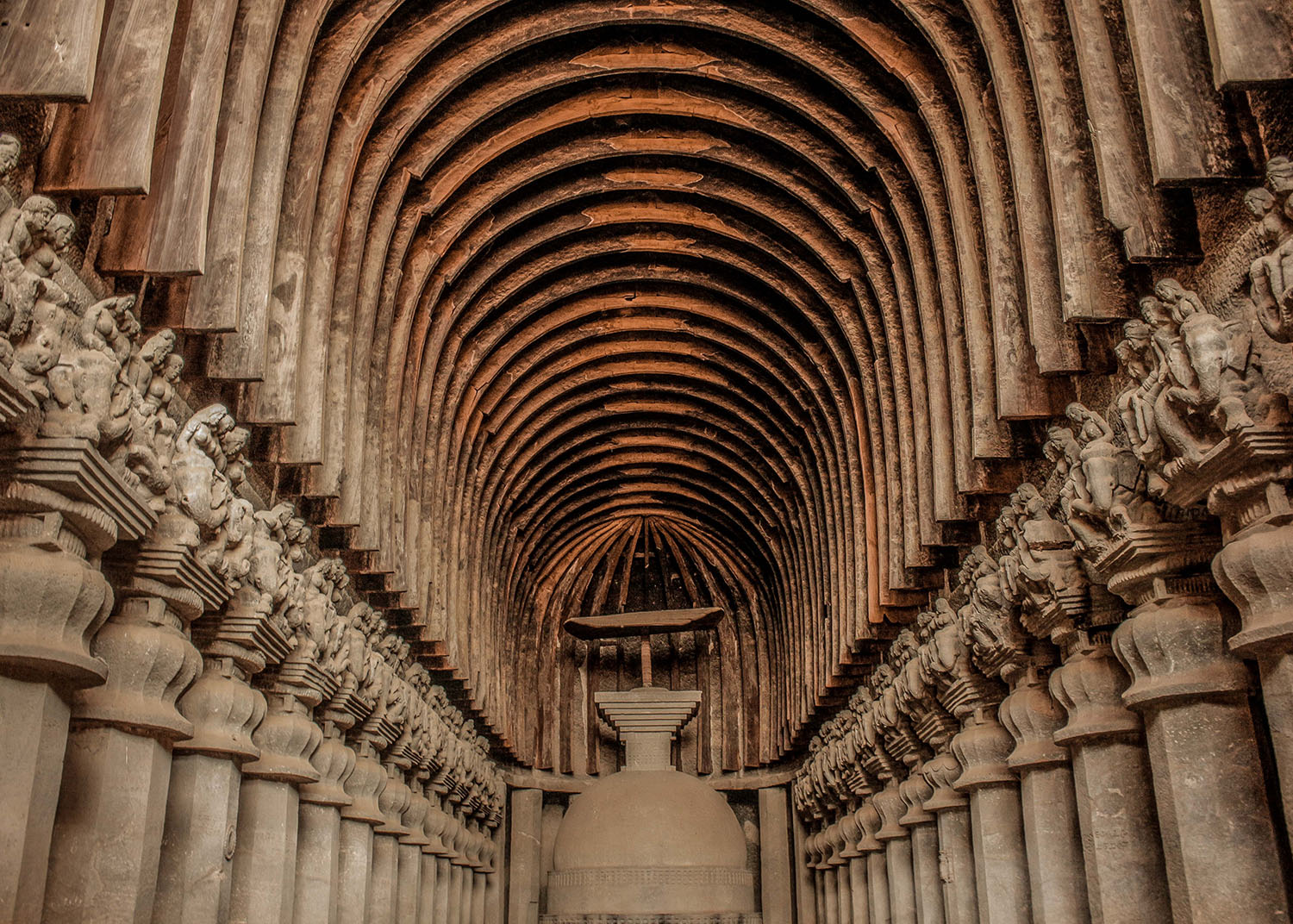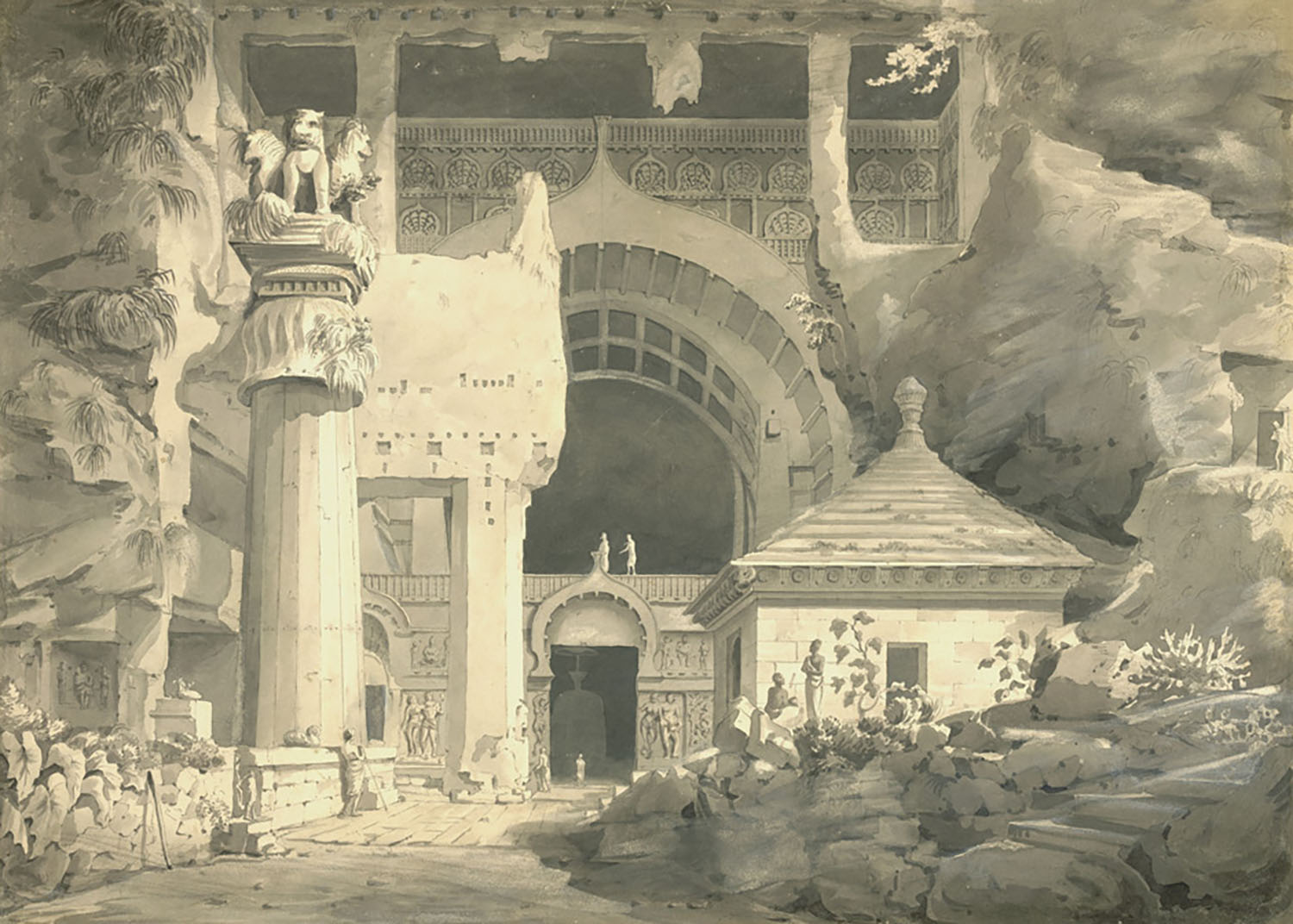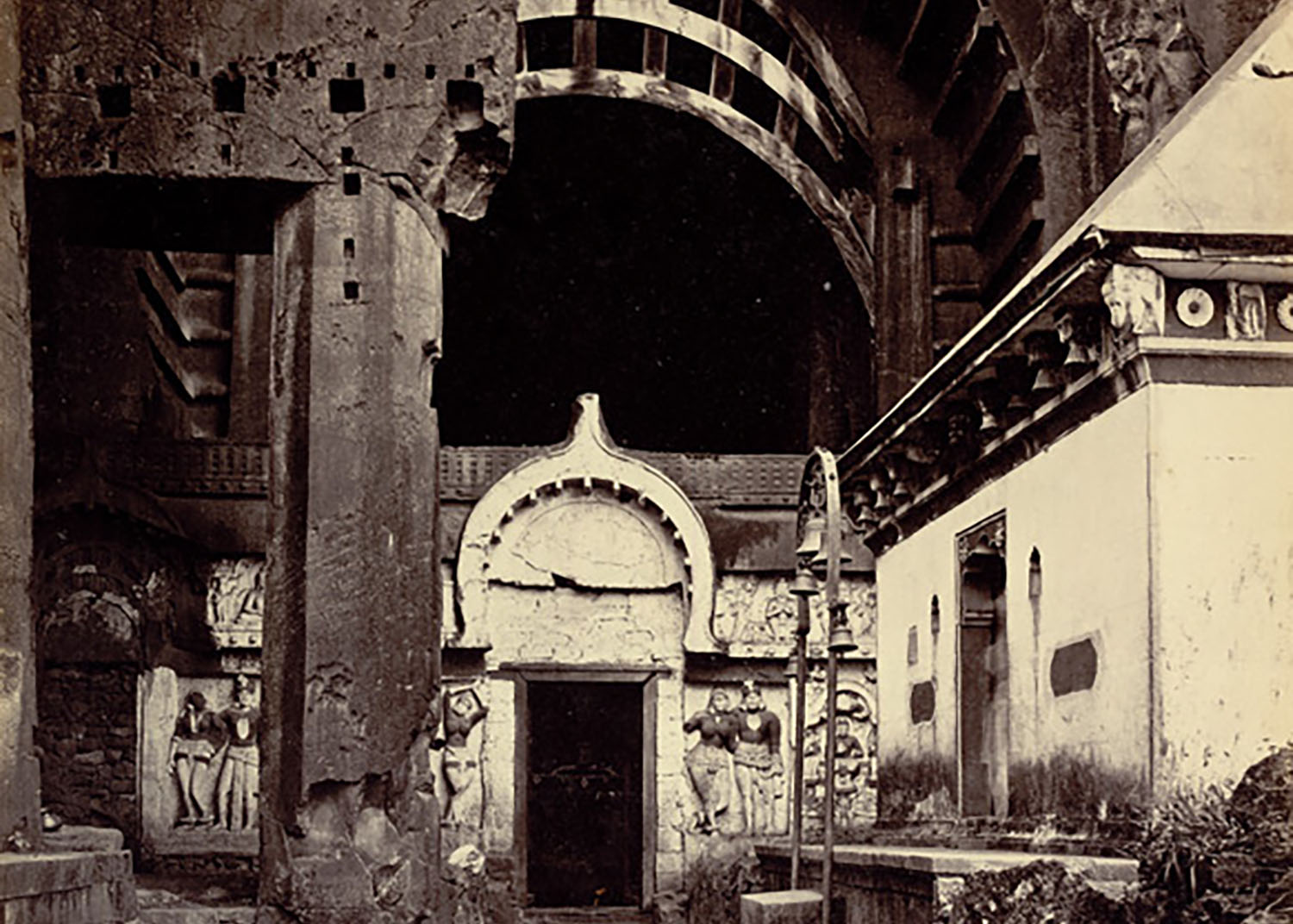ARTICLE
Karle Caves
There have been several modifications to the edifice over the period of its occupation. The chaitya was originally aniconic, but figures of the Buddha and his attendants were added in the veranda and the front wall. A sculpture of the Buddha with the bodhisattvas Padmapani and Manjushri was also inserted at the entrance. New sculptures were also similarly installed at the older cave sites of Nasik and Kanheri, suggesting that these were all tied to changes in theology and patterns of patronage in the early centuries CE.
The vihara caves at Karle were the dwellings of monks and nuns, and vary considerably in their size and plan. They range from single cells and groups of cells to colonnaded verandas and halls. These cells mostly contain slightly raised platforms that served as beds.
The Karle caves continue to be major tourist attractions at the time of writing.
Bibliography
Our website is currently undergoing maintenance and re-design, due to which we have had to take down some of our bibliographies. While these will be re-published shortly, you can request references for specific articles by writing to hellomapacademy@map-india.org.










